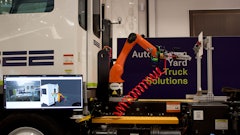
Autonomous vehicles have arrived. For example, over 100 AVs are now providing driverless taxi services in Austin, TX, and a company called Waymo is offering a similar service in San Francisco.
AV taxies are not the full extent of it, however, as autonomous delivery trucks are also in the works. A recent report revealed Tyson Foods is partnering with a leading driverless technology developer to test the feasibility of using autonomous trucks.
For those in the supply chain space, the news about AVs and the role they could play in facilitating deliveries should come as a wake-up call. Now is the time to explore the benefits of AVs and develop an understanding of the potential they have to reshape the supply chain cycle.
The following are four ways businesses could benefit from investing in autonomous vehicles and integrating them into their supply chain.
Reducing Business Insurance Costs
One of the primary arguments in favor of autonomous vehicles involves their ability to reduce accident rates. The US Office of Motor Vehicles reports human error is responsible for 98% of all vehicle crashes, but with AVs, all of the human limitations that lead to those errors are done away with.
For example, AVs don’t experience fatigue, which is a major cause of accidents. AVs also don’t get distracted or drive while intoxicated. Provided they are programmed correctly, AVs don’t violate traffic rules, which also can lead to accidents.
Superior reaction time is another factor that helps AVs to avoid accidents. A recent test conducted by an AV company pitted AVs against simulated human drivers acting in ideal conditions. The test found AVs avoid accidents 75% of the time, versus a 62.5% success rate for human counterparts.
For companies that rely on delivery drivers for their supply chain needs, reducing accidents with AVs means lowering insurance costs. There is also the possibility AVs will create a scenario in which liability shifts from users to manufacturers and software providers, which would also mean fewer insurance obligations for supply chain companies.
Enhancing Safety
As mentioned above, AVs remove the human factors that add safety risks to delivery operations. In addition, they also add a “superhuman” factor that enhances safety.
Heightened sensory perception is one of the safety features AVs deliver. They are capable of constant 360-degree monitoring with both cameras and sensors, which is a significant improvement over what humans can deliver and makes autonomous vehicles much more capable of avoiding collisions.
AVs can also benefit from vehicle-to-vehicle connectivity. Wireless connections allow AVs to be aware of other vehicles on the road without needing to see them, letting them easily identify potential risks before they escalate into a dangerous situation.
As road conditions change, AVs can enhance safety by adapting dynamically and objectively. Factors such as vehicle speed, following distance, and instrument settings can be automatically adjusted based on conditions, without delays or errors that could be caused by human subjectivity.
AVs can also enhance safety by constantly collecting performance data. As the data is analyzed, new safety risks can be identified and new safety procedures can be developed to further improve performance.
Increasing delivery speed and efficiency
Enhanced efficiency is one of the key benefits AI promises to the business world. By automating tasks previously delegated to human workers, AI empowers a new generation of always-on business processes. The work AI does — from coding to customer service to driving AVs — can happen 24/7, without a break.
With AVs, that means delivery functions are not affected by the limitations of human drivers since they can operate continuously, without meal breaks, bathroom breaks or sleep. Recharging, refueling and reloading are the only needs AVs have.
AVs also promise to increase efficiency and speed through platooning. Because AVs use AI-empowered navigation, they are capable of safely following other AVs very closely in platoon formations. This allows for increased throughput, which enhances the speed and efficiency of the overall delivery process.
Reducing Road Congestion
For years, delivery vehicles have been cited as a key contributor to road congestion. A recent Wall Street Journal article on the impact of delivery vehicles revealed truck traffic hit a record high in 2021, with experts estimating it would continue growing in the years to come. Many are looking to AVs to reduce congestion while still providing for consumers’ delivery needs.
Indeed, most of the factors mentioned above empower AVs to play a role in reducing congestion. Superior reaction time means AVs can travel closer to other vehicles and accelerate and decelerate with more precision. As a result, vehicles need less buffer space and traffic can flow more smoothly. Faster reactions also mean fewer accidents, which are major contributors to congestion.
Artificial intelligence already plays a key role in increasing efficiency in the supply chain cycle. Using AI to empower AVs is a game changer that promises to take efficiency to the next level. By embracing the innovations AV promises to bring to delivery systems, businesses can reduce costs, increase speeds and enhance safety, all while reducing congestion on roadways.


























